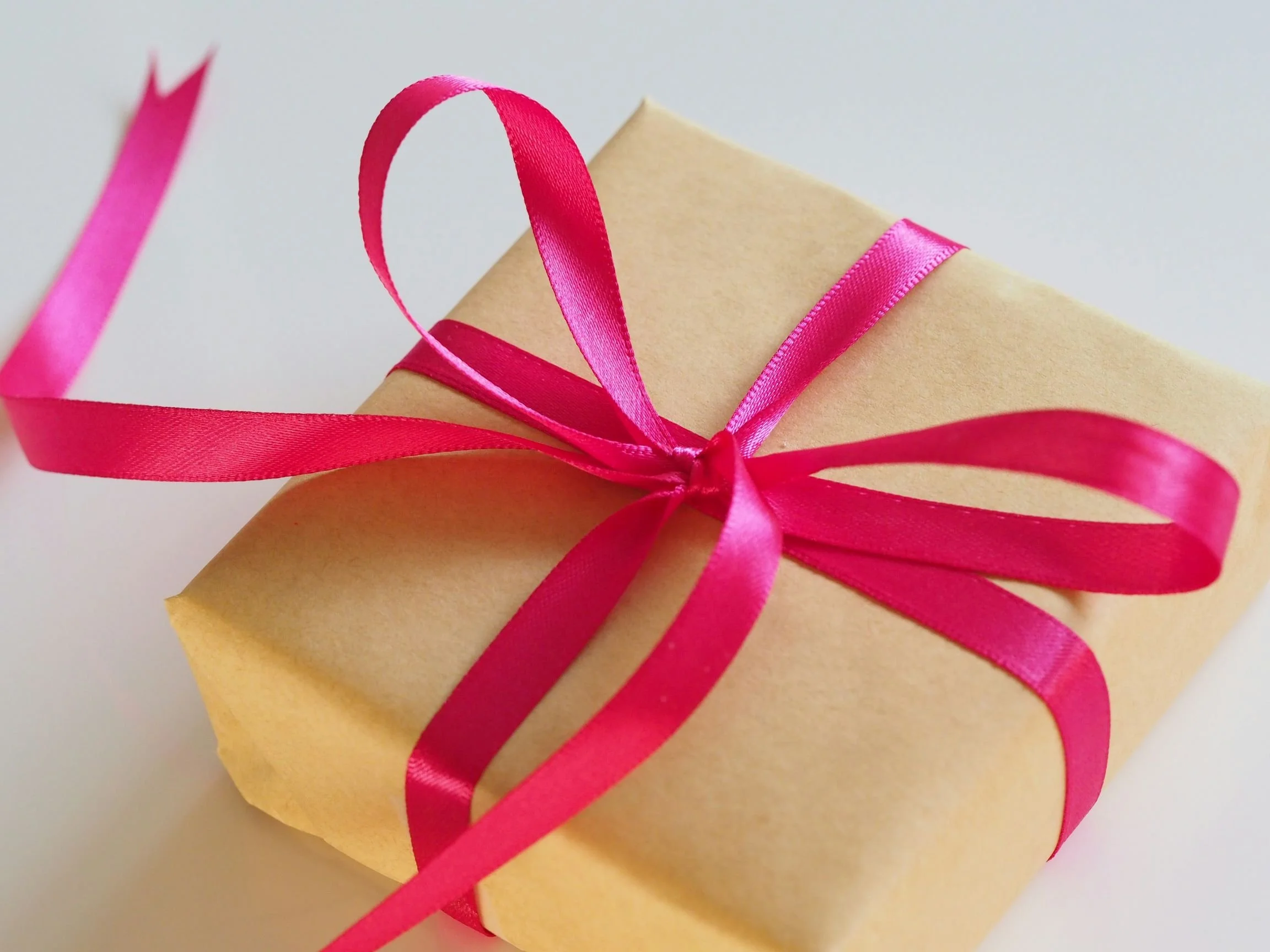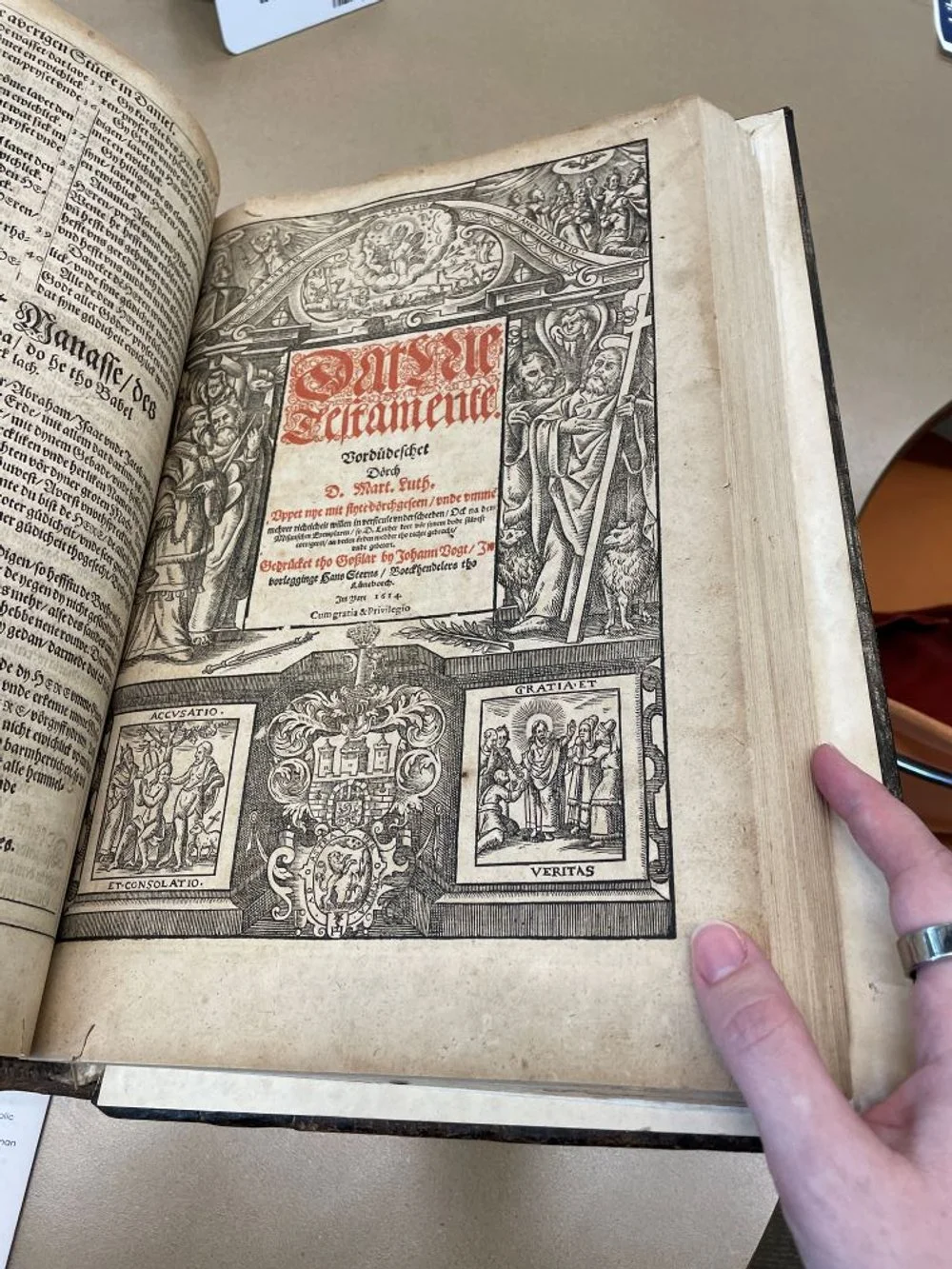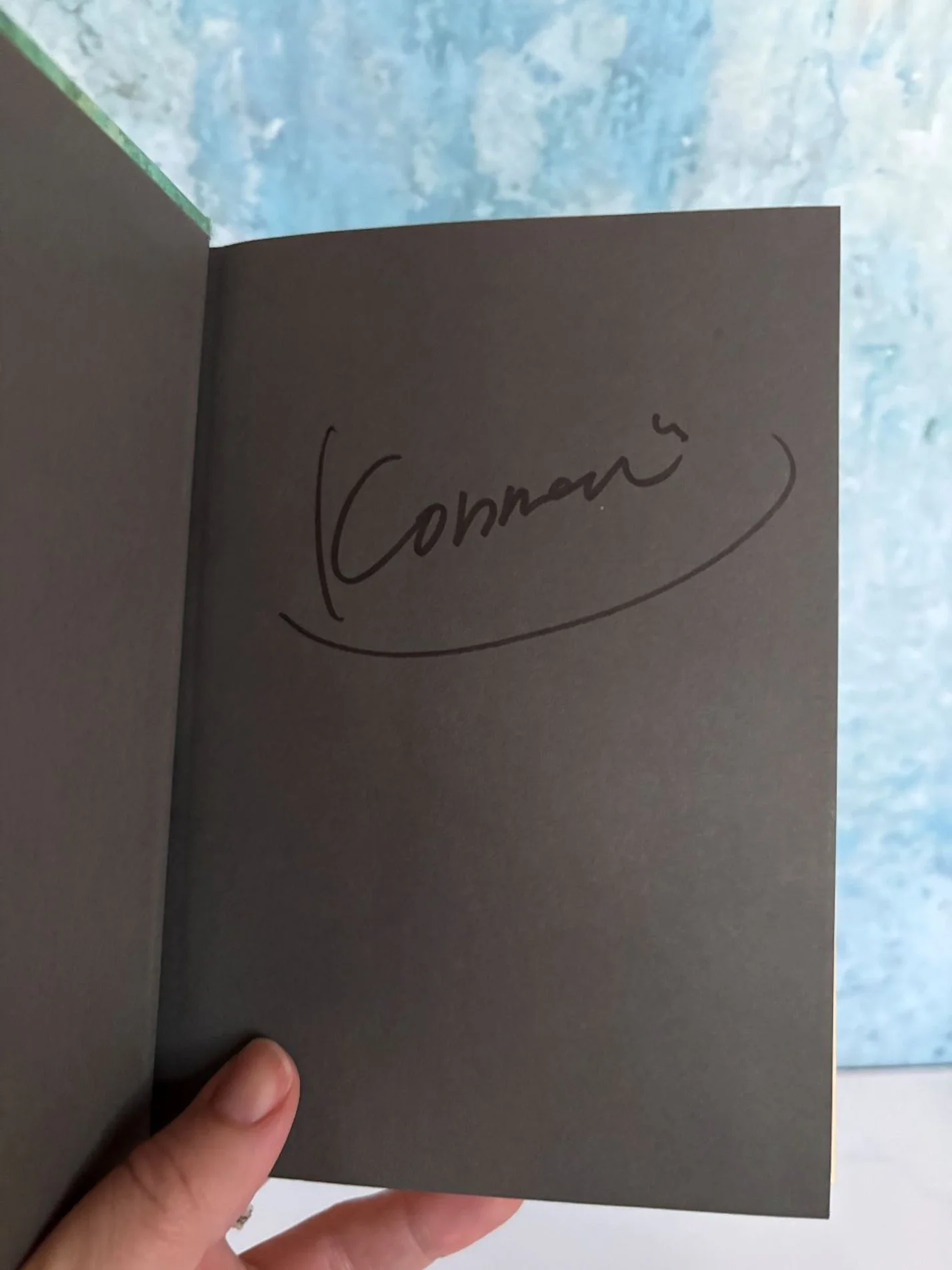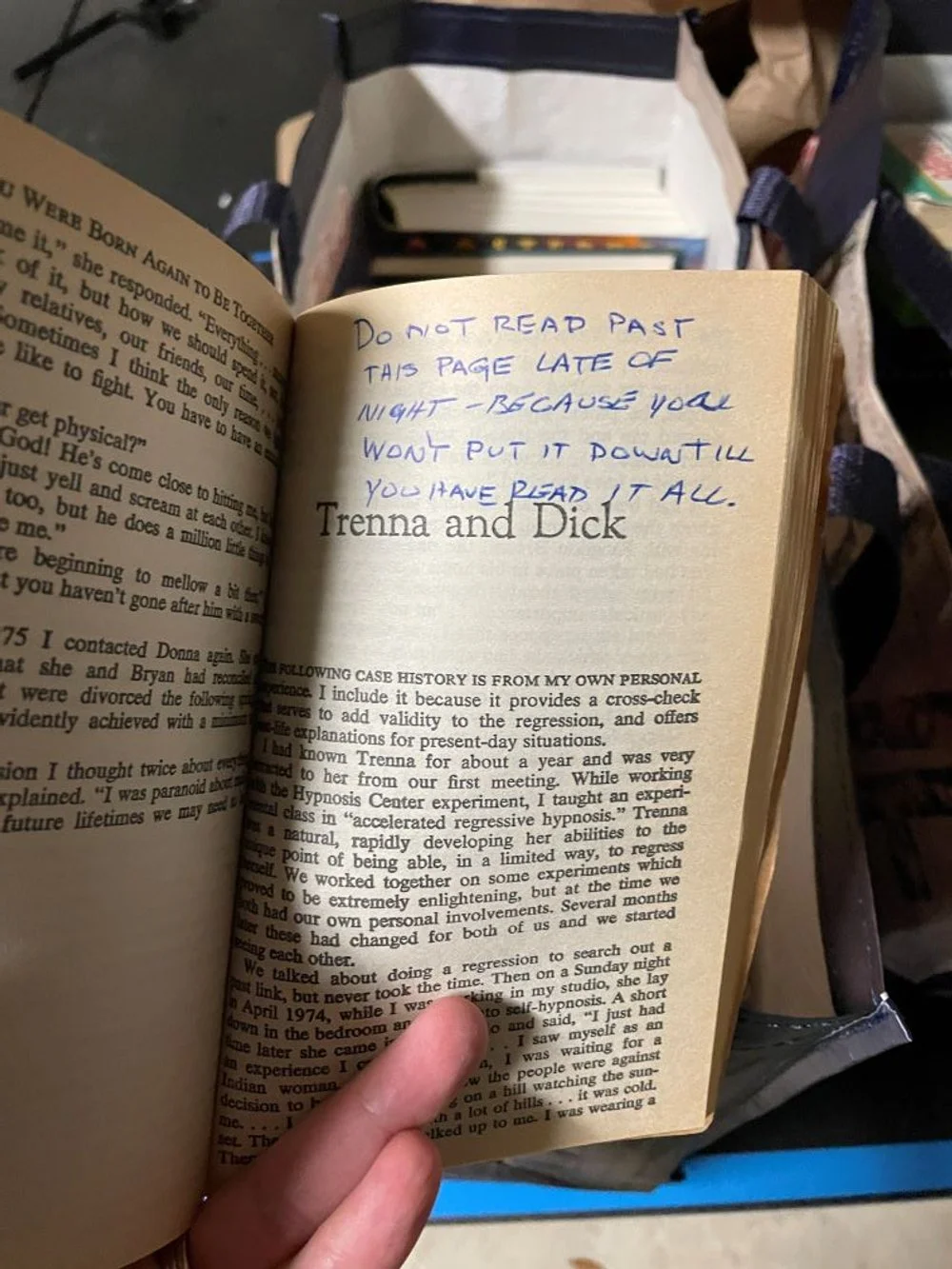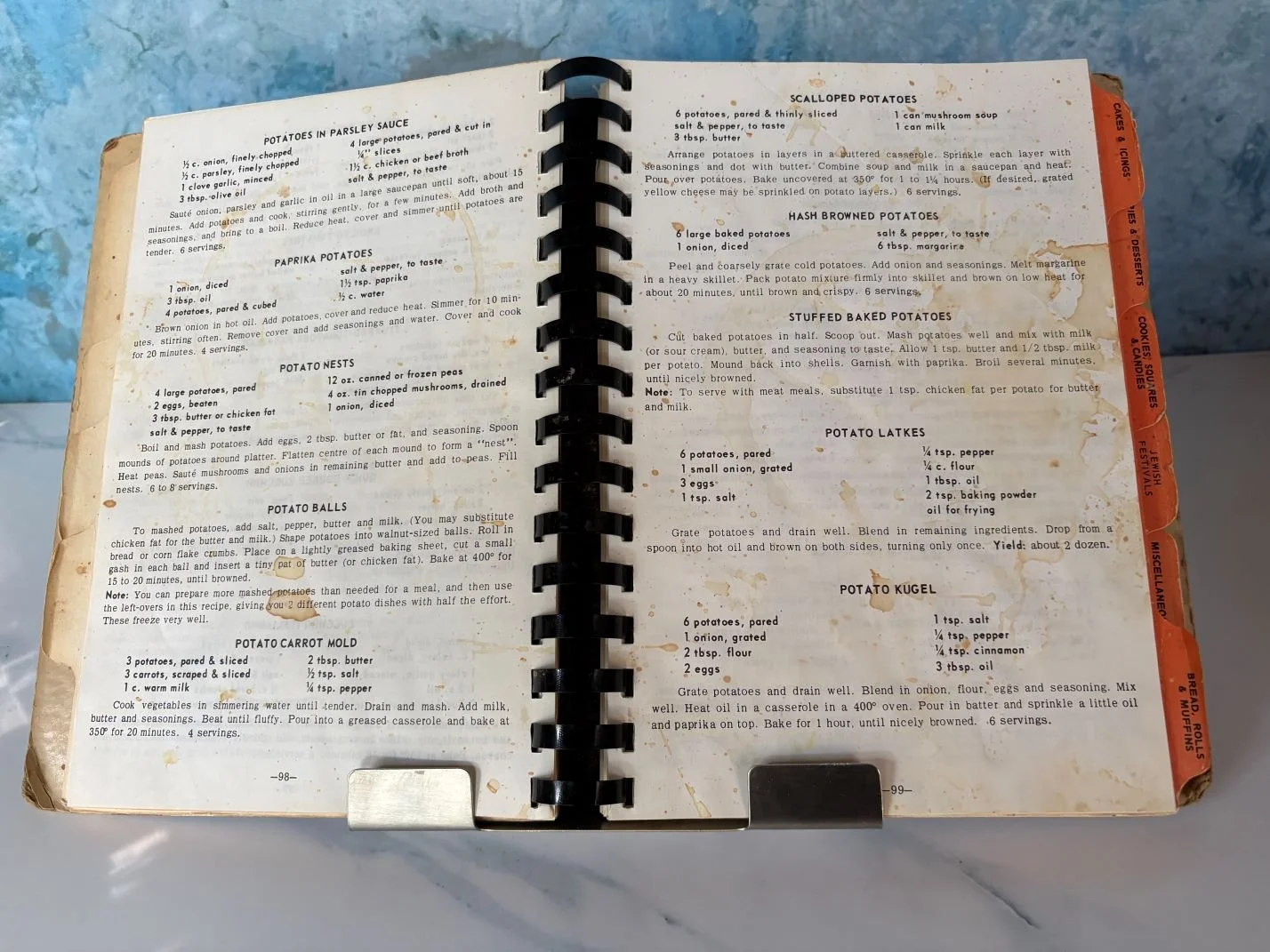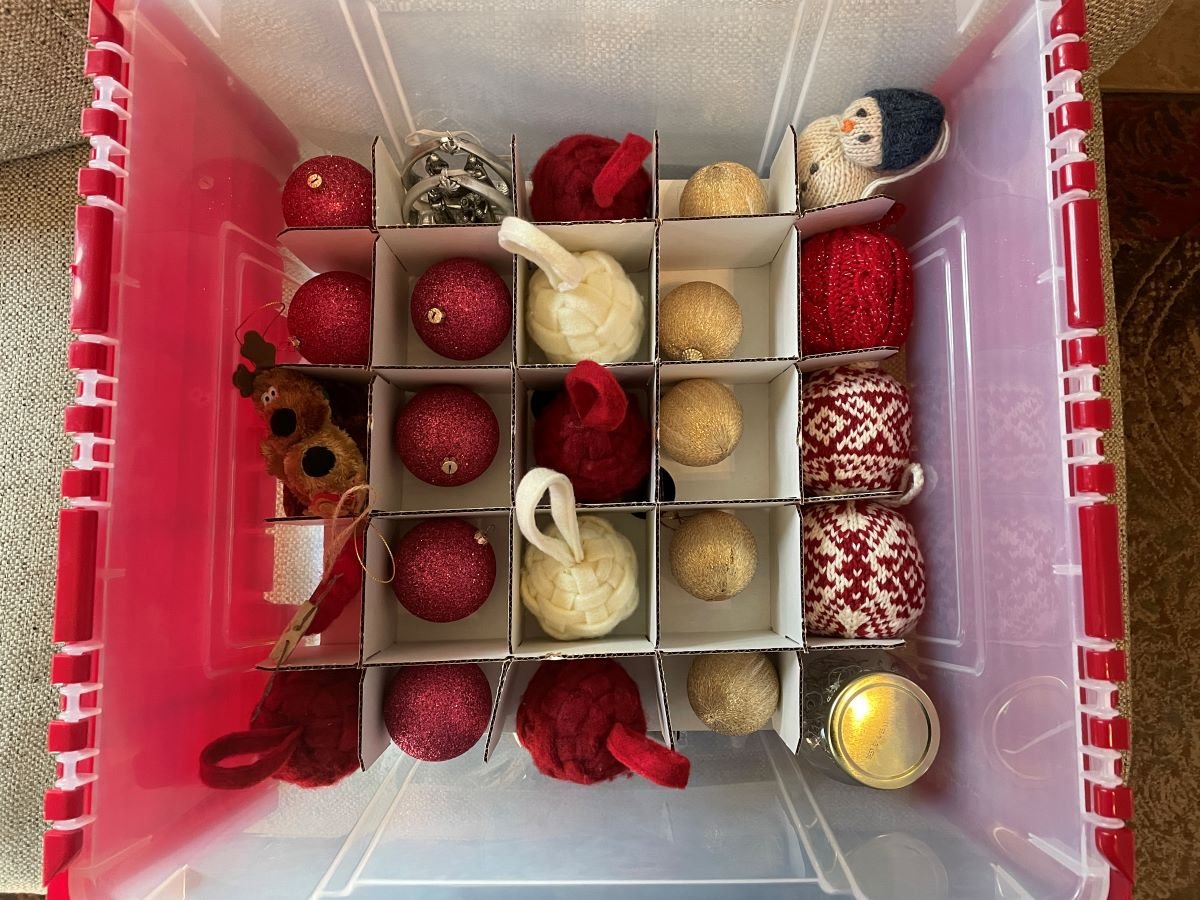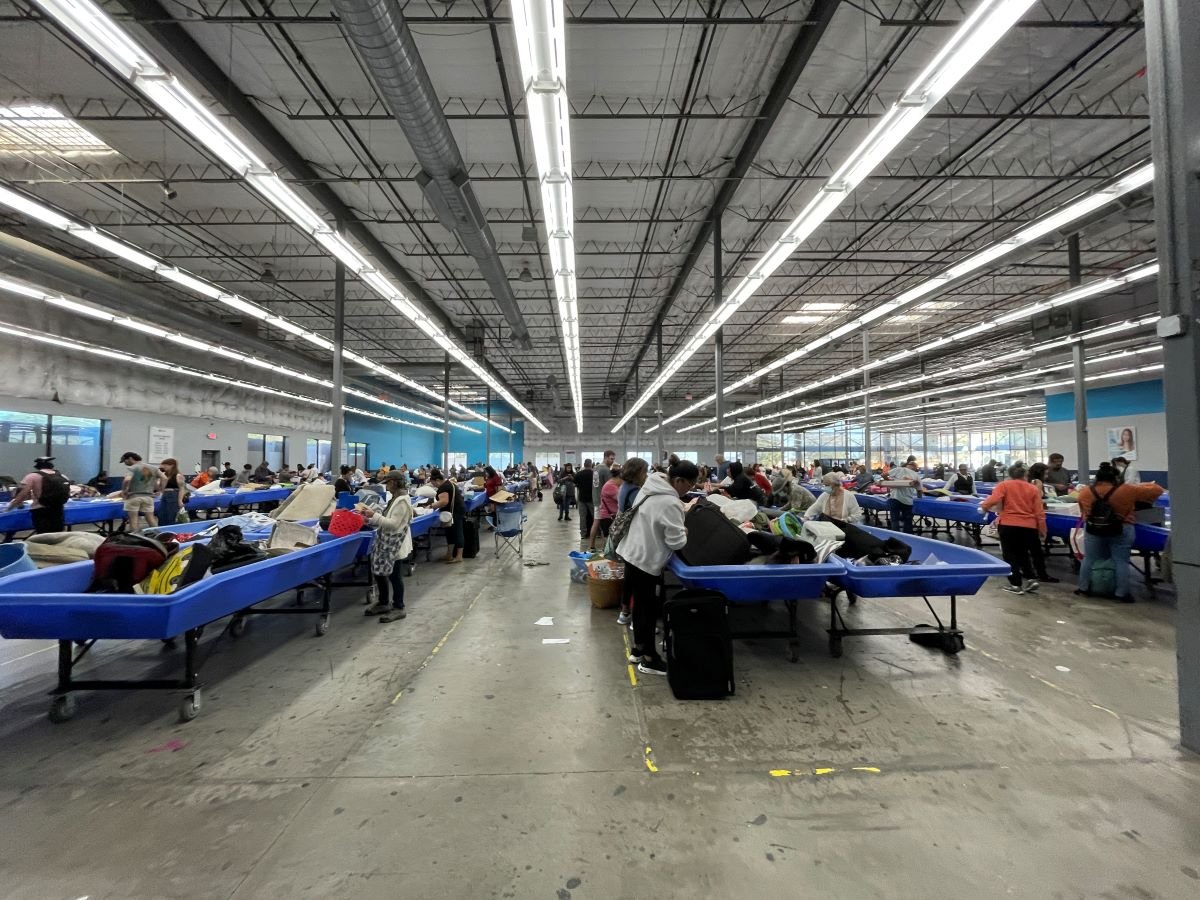Gifting without the clutter
We all want to give gifts without creating clutter for the recipient. And when we come across something we just know they will love, it’s like everything falls into place! But what if we simply don’t know what to give them? I’m thinking of someone whose gifts from his father have consistently missed the mark for the last 20+ years, and I’m sure we would all like to avoid similar situations!
This photo was taken by Jess Bailey for Unsplash.
It turns out that gifts must actually fill two purposes: please the recipient, but also please the giver. The recipient might prefer meaningful or practical gifts, while the giver will often focus on the “wow factor” when the recipient unwraps the gift, instead of on the pleasure the recipient will have when they use the gift in the weeks, months, or years to come. The giver will also want to find a gift that aligns with their own tastes and values – someone who reads only fiction will not instinctively be drawn to gifting self-help books or biographies, despite the recipient’s own preferences.
One thing that my family has always done, and that is apparently controversial for some, is to create wish lists. Some people are completely opposed to the idea because to them, surprising the recipient is part of the fun. However, research actually shows that recipients are happier when they get what they wanted in the first place! And isn’t that what giving should really be about, making the recipient happy? We always take the time to write our own wish list and to ask our loved ones what they would like. (An online wish list has the added advantage of avoiding duplicate gifts, which are disappointing for all parties involved.)
As adults, my husband and I have reached the point where there aren’t always many material possessions that we want. Our wish list will therefore include items like an experience: a restaurant meal, concert tickets, a spa treatment, a magazine subscription, a class or workshop, or even a weekend getaway are all possible options. Experiences often make people happier than material goods, anyway. Creating a wish list is itself a joyful experience, because we go through the anticipation and visualization process of getting those things we really want.
With our children, I like to encourage decluttering before the holidays, which not only helps create more room for incoming presents, but can also help our kids verbalize what they would want. They might get rid of a toy because it is broken but ask for a replacement, or they might decide that they want more building blocks of a specific brand because they enjoy them so much, or they might realize that a certain type of toy has been outgrown and is no longer interesting to them. (We donate all items that are still in good condition, which is why I prefer doing this before the holidays so that other kids can enjoy them then, but of course decluttering after the holidays is still a great idea!)
This photo was taken by Valentin Petkov for Unsplash.
When it comes to giving items to people we don’t know very well, or at least not well enough to ask them for a wish list, I like to choose things that are overall crowd-pleasers and that don’t create clutter. Some favorites include gourmet food or gift cards (to a restaurant, a favorite store, or something fun like the movie theater). These are usually superficial enough that they can be enjoyed by most people (or regifted, at worst), and they do not create clutter. That being said, research shows that something with even broader appeal could be better (say, a gift card to Amazon or Target or a Visa gift card, so that the recipient can get what they really want).
Finally, I will leave you with some words from Marie Kondo: “The purpose of a gift is to be received.” If you receive a gift that underwhelms you, make sure to thank the giver for their kindness, because it was indeed nice that they thought of you. You can try using the gift to see if it grows on you, but if it doesn’t, do not feel obligated to keep it! The giver would not want to burden you with it. Feel free to pass it on to someone else who could use it.
By the way, you can see my previous blog post with ideas for Advent calendar options that won’t create clutter!
Hi there! I’m Amélie, a professional home organizer in San Antonio, Texas. I help people like you declutter their home, organize their belongings, and simplify their life. I love cleaning out a closet and removing a carload of donations from a home! My goal is to help you create a functional space that will make your life easier and more peaceful.
Interested? Check out my personalized services or book your complimentary consultation!
How to get unstuck
It’s very common to get so overwhelmed by a messy, cluttered space that we get stuck! We get analysis paralysis and freeze because we don’t know what the next step is, and the whole task seems like too much. I know it happens to my clients a lot, and it sometimes happens to me, too! People who find themselves in that situation will often just give up – they will ignore the space, which means that it will stay the same or even get worse, but it still occupies a lot of mental bandwidth for them. So, what can we do to get unstuck?
If you feel so overwhelmed by a task that you are unable to start it, it’s because the first step isn’t small enough. So break the task down into smaller chunks to get a better handle on it!
Here is one simple tip I swear by: Pick a corner and start working from there. Maybe I start by picking things up off the floor so that I have room to walk around without tripping. Then I’ll pick a corner of the room and work my way clockwise until it’s done. If there are piles of boxes, I just do one box at a time.
You can also do this in small chunks of time! Obviously, when I go to a client’s home, I might be working for hours at a time. But you can set a timer and do this for 15 minutes, a little bit every day, and you will definitely see progress! The important thing is to keep the momentum going.
Another important point is that you need to define the task. Figure out what actions you need to take, or what your options might be for each item, before you even start.
Let’s say we are working through a pile pf papers. Your options might look like “shred,” “recycle,” “file with taxes,” “file with other important papers,” “keep only until a certain date,” or “act on it.” While you can’t necessarily account for everything, you’ll at least know roughly what to expect and can set yourself up accordingly with a paper bag to hold paper to be shredded, a recycling bin, and a filing system.
If the task is to unpack after a move or to sort through boxes of items that belonged to a deceased loved one, then you know you will need to open boxes and make decisions about the items inside. Keep or discard? And if you are keeping the item, where will you store it? Take it one box at a time.
Finally, get support when you need it.
This could look like having a friend or relative help you, or you can consider hiring a professional like myself or one of my colleagues. Home organizers love to help you solve those problems!
Hi there! I’m Amélie, a professional home organizer in San Antonio, Texas. I help people like you declutter their home, organize their belongings, and simplify their life. I love cleaning out a closet and removing a carload of donations from a home! My goal is to help you create a functional space that will make your life easier and more peaceful.
Interested? Check out my personalized services or book your complimentary consultation!
Writing in books
This is not a typical blog post, but it is certainly too long to be a social media post! I started thinking about people writing in books, and these are my musings on the topic.
It started when I saw a post by Jenny Lawson, a local writer and independent book shop owner, in which she talked about some books she had purchased from the late Shelley Duvall’s estate.
Picture from Jenny Lawson’s Instagram feed, @thebloggess
When she acquired a book, Shelley Duvall had the habit of writing her name, the date, and the city in which she was at the time. In her case, it increased the value of the book because she is famous. (Jenny Lawson is now contemplating doing the same thing, and she is famous enough that there would be a market for it.)
This got me thinking… When is writing in a book okay, and when does it take away from the value of the book? I personally never write in my books; when I make a modification to a recipe, for example, I write my comments on a sticky note and put that on the page, instead of writing directly in the book. When I buy a used book, I certainly prefer it if it hasn’t been marked up. Used children’s books bearing a gift inscription on the inside cover page always make me sad. So, us non-famous folks should just refrain from ever marking up the pages, right?
A few days after that, something else happened that changed my mind about it. I went to see the Low German Bible from 1614 and noticed that it was marked in some spots. The most notable is the name of one of the owners, Johan Schwarting, written on the inside cover along with the inscription “my book” in German. He acquired this Bible when it was already over 200 years old. A few other pages inside the Bible have notes that someone scribbled in the margin. And at this point, centuries down the line, I think that those hand-written notes automatically make the book more interesting, because it’s like a time capsule that makes us think about people who lived so long before we did.
There are some types of markings that we all agree are good. Like when a book is signed by the author, that automatically makes it better, right?
Does it make a difference if the note was meant strictly for the person who wrote it versus meant for whomever might read it later?
There are also some markings that would have significance to specific people, like if a loved one wrote the note. It could also be food residue from making latkes on a bubby’s recipe, and it just makes you think of her and her delicious latkes whenever you see it.
Is there a point after which markings become significant, or a positive thing in a book? I’m thinking that we would give significance to anything older than 100 years or so, right? Except, perhaps, in the case of a random person marking up what would otherwise be a pristine first edition of a now-famous work?
What is your policy about writing in books?
Hi there! I’m Amélie, a professional home organizer in San Antonio, Texas. I help people like you declutter their home, organize their belongings, and simplify their life. I love cleaning out a closet and removing a carload of donations from a home! My goal is to help you create a functional space that will make your life easier and more peaceful.
Interested? Check out my personalized services or book your complimentary consultation!
MYTH - “Your house must be perfect”
When people find out that I am a professional organizer, I typically get one of two responses. It’s either “I really need you in my life” (yes, please – click here for your complimentary consultation!) or “Oh, I bet your house is perfect!” And, about that latter statement… no, it’s not. But as I keep saying, there is a difference between having a tidy house (as in, picture-perfect at all times) and having a house that is *easy to tidy*. I aim for the latter because that’s what I feel is realistic.
Here's what I mean by that. Once you declutter and organize, all your things will have a home. Of course, your house still will get messy at times because, well, you live there, and you use your stuff! But if those items have a designated home, then when you want to put things away, you can do so quickly, so your house can look neat again without too much effort. But if your house is cluttered, those items don’t have anywhere to go, and that’s really the issue that I try to address with my clients.
Resets are important
Everyone needs to “reset” their home, myself included. It might be a nightly reset, like making sure the dishes have been washed and the kitchen counters are wiped clean each night. It could be weekly, like picking up toys and vacuuming, or doing the laundry that has piled up. It could be quarterly, like assessing your wardrobe when the weather changes every season or setting up the garage based on your needs for the next few months.
Sometimes, we need to do more than a reset – it might need to be a complete overhaul, because our life changes. Looking at my pantry, for example, I remember a time when it was used only to feed two adults; then we had to store jars of baby food and boxes of Mum-Mum crackers and rice puffs; now, it has school-safe snacks and other sundries that the kids access themselves. It works because we zone everything, and rezone as needed.
This is not my guest bedroom, but I like this photo because it does show proper zoning, with a defined zone for sleeping and one for sitting and working on the laptop. Photo by Pixabay for Pexels.
Zoning a room
Let’s bring this together with a real-life example from my own home: the spare room. When my husband and I first moved into the house, this room was strictly a guest bedroom, with a double bed and two nightstands. Eventually, we had kids, and the room that I had been using as a craft room (sewing supplies, wrapping paper, etc.) had to become a child’s bedroom, so we relocated the craft supplies to the guest bedroom. This meant trading the bed for a Murphy bed, which takes up very little room when not in use, and setting up the sewing machine on a sturdy folding table, which can be put away in the garage when we have guests. Eventually, during the pandemic, it doubled (tripled?) as a home classroom, with the sewing machine set aside on the floor and a laptop on the table instead. Fast-forward to today, and it’s also the music room, currently holding a marimba as well as a drum set, plus an electric guitar. Oh, and did I mention it’s where I do my ironing?
As you can imagine, this room has A LOT of stuff in it! But it works for us because we use all those things, albeit at different times. And yes, we do have to move them out of the way temporarily when we have guests, so our “guest bedroom” is certainly not Pinterest-worthy! But it is organized because we’ve set up the items there in zones and we kept only what we used. And, let’s be honest, because we have a contingency plan for where to temporarily store those items when the room is used as a guest bedroom! It is perfectly functional for our lives at the moment, though it’s not “perfect” at all.
Hi there! I’m Amélie, a professional home organizer in San Antonio, Texas. I help people like you declutter their home, organize their belongings, and simplify their life. I love cleaning out a closet and removing a carload of donations from a home! My goal is to help you create a functional space that will make your life easier and more peaceful.
Interested? Check out my personalized services or book your complimentary consultation!
10 Questions to Help You Make a Decluttering Decision
When I work with a client, I often help them decide what to keep and what to discard. Below are some of the questions I might ask them to help them decide. And for the record, when I say “discard,” I don’t necessarily mean “throw away”! Discarding something simply means that you no longer want to keep it – the item itself can be tossed, but also sold, donated, upcycled, recycled, given to a loved one, etc. As a matter of fact, if what is holding you back is knowing how to dispose of your item, I’ve got a blog post for that too!
First, know that the question you are instinctively asking yourself is often the answer. If you are holding up a dress and asking if it’s too short, it means that you feel like it’s too short for you, and there’s your answer. It does not matter whether the dress is objectively too short or not, because *you* feel a bit awkward in it, and therefore, it does not spark joy *for you*. Let it go!
That being said, if you are in a situation where you are on the fence about discarding an object, here are ten questions you can ask yourself to arrive at a decision.
1 – Do I love this item? If you love it, then you would almost always want to keep it. If not, then why do you still have it?
2 – Do I use this item? Maybe it is something that could be useful in theory, but it just doesn’t fit your lifestyle. Maybe it’s tied to your past self (and you’ve moved on) or your fantasy self (which is not realistic). It’s also possible that you use it, but do not actually like it, in which case you could upgrade to an item you do like.
3 – Is this something I would buy again today? Let’s say you bought a sweater that looked really nice, but now you feel self-conscious wearing it, you’re always pulling at it, it’s too scratchy, etc. Or you spent a lot of money on it, so you feel like letting it go would be wasting that money, but you don’t actually use the item (newsflash: that money is gone already, and keeping the item won’t bring it back). Another way to look at this would be to ask yourself whether you would bring it with you if you moved, or whether it would be worth the effort to clean it if you spilled red wine on it.
4 – Do negative feelings come up when I look at it or handle it? Think for example of “closet bullies,” those clothes that make you feel guilty – because you spent a lot of money but do not wear it, or because you have gained weight and it no longer fits. It could also be a gift that you do not actually like. You deserve better than being bullied in your own closet! Think of your closet as a party when you know everyone and like everyone, and curate your guest list accordingly.
5 – Is it worth the time, money, and energy it takes to maintain it? Everything you own takes up space, both physically and mentally, and will require maintenance. It could even end up being in your way all the time. Maybe you don’t want that board game with a million little pieces to put away each time. Maybe your nice Airstream trailer has turned into a white elephant.
6 – Am I keeping it because it needs to be repaired? There are often items in our home that we keep because we intend to repair them, or they are a project that we thought we would finish. It might be time to cut your losses on that one!
7 – Is this something I could borrow or rent easily if needed? Maybe your neighbor has a tall ladder you could borrow on occasion. Maybe you could just rent a wet vac if you were to need it, instead of keeping one in your garage at all times.
8 – Does it pass the 20/20 rule? Meaning, could you easily replace it if necessary, in about 20 minutes by going to the store and/or for about $20? If so, don’t worry about letting it go – it would not be an expensive mistake.
9 – Will anyone be happier if I keep this? I borrowed this question from Margareta Magnusson and Swedish Death Cleaning, and this is a great question to ask yourself when something is holding you back from getting rid of an item. It could be that you are saving it for someone in particular, in which case, just make plans to pass it on to that person! Otherwise, the answer is usually no.
10 – Is this bringing me closer to my ideal lifestyle? This question is from Marie Kondo’s KonMari Method®. Essentially, you have this vision of the life you want, or at the very least of what you want from your space. Where does that item fit in, if at all?
I hope those questions help give you more clarity when you are deciding which items to keep and which to discard. And if you want my help with your project, just get in touch!
Hi there! I’m Amélie, a professional home organizer in San Antonio, Texas. I help people like you declutter their home, organize their belongings, and simplify their life. I love cleaning out a closet and removing a carload of donations from a home! My goal is to help you create a functional space that will make your life easier and more peaceful.
Interested? Check out my personalized services or book your complimentary consultation!
What should I do with my stuff... in San Antonio?
I have seen this scenario a hundred times: you have a pile of stuff you want to get rid of, but you don’t have a plan. So, the pile doesn’t move and just becomes part of your décor. Sounds familiar? Let me help!
As a professional home organizer, I take my clients’ donations away after a session if they wish. But for everyone else in San Antonio, Texas, here are some resources where you can drop off your donations. Leave a comment if you have a favorite that I forgot! (Please do not suggest charities that only accept monetary donations or brand-new items straight from their wish list, as that is not the point of this post. This is for in-kind donations of gently used items.)
I have separated the sections below by theme; feel free to use the Find function (Ctrl + F ) to find a specific item, or just scroll through to read. There are options for donating, selling, or recycling responsibly.
Consider donating to women’s/children’s shelters, homeless shelters or other charities, such as…
- Haven for Hope (items for adults and children, household goods)
- Family Violence Prevention Services (clothes for women and babies, diapers, toiletries, household items)
- Child Safe (diapers, wipes, school supplies, gift cards)
- Margaret’s Place (toiletries, diapers, clothes, school supplies, board games)
- Children Matter (toys, art supplies, household items)
- The Hope Center (food, clothing, household goods)
- San Antonio Ministries (toiletries, non-perishable snacks)
- I Support the Girls (bras, period products)
- Volunteer Services Council of TCID (coats, shoes, luggage, crafts and activities)
- The Strong Foundation (homeless families need all sorts of items, including appliances)
- VetStrong (formerly homeless veterans needs furniture and household goods, including mattresses!)
- Homeless shelters in San Antonio (clothes, toiletries, food)
- Boysville Auxiliary Thrift Store is a non-profit (accepts clothes and household items; can pick up furniture)
- Zappos will let you print a free shipping label for gently used shoes and clothes; items are donated to Soles4Souls or recycled
- Your local church or community center might be interested as well
For more specific items:
- Animal shelters (pet items, pet food, old towels and blankets)
- Food pantries for non-perishables
- Dress for Success (work clothes)
- The Bra Recyclers (will donate or recycle bras)
- Brides Across America (wedding dresses up to 3 years old)
- Project MEND (medical equipment)
- Street2Feet (gently used athletic shoes, socks, and apparel)
- Lions Club or most optometrists (used eyeglasses, including prescription eyewear)
- Local daycares, schools, and libraries (toys, books, change of clothes)
- Local first responders (stuffed animals)
- National Crayon Recycle Program (crayons)
- LEGO® Replay (LEGO® bricks)
- The Book Rescuers (books, including textbooks!)
- Nationwide Trophy Recycling Program (trophies)
- Coinstar kiosks, choose your charity (coins, including foreign currency to UNICEF Change for Good)
- Spare Parts (arts and craft supplies)
- St. Jude Children’s Research Hospital (donate gift cards, even partially used)
- Resupply will pick up furniture
- World Computer Exchange (old computers)
- Computers With Causes (old computers and equipment)
- The Tech Take Back Box (electronics)
- Freecycle (post what you have, or search for “ISO [your item]”)
For household goods and clothes and with possible pickup:
- Goodwill
- AMVETS
- Habitat for Humanity (some appliances, furniture, home décor, light fixtures, electronics, rugs, patio furniture, etc.)
- Give Back Box (to mail in small items)
- Or use Donation Town to schedule a pick-up with a local charity
To make a bit of extra cash in person:
- Yard sale
- Nextdoor, Facebook Marketplace, community Facebook group
- Half-Price Books (books, magazines, music, movies, board games)
- Clothes Mentor (seasonal women’s clothes)
- Too Good to Be Threw (high-end fashion and furniture)
- H&M (any clothes or even fabric for recycling – you receive a coupon for your next purchase)
- DSW will give gently used shoes to Soles 4 Souls; you get 50 points per pair
- Bricks & Minifigs (LEGO®)
- My Comic Shop buyer associates (comic books)
To make a bit of extra cash online:
- eBay.com (just about anything)
- Gazelle.com (cellphones, tablets)
- Amazon Trade-in (tech, cell phones, gaming)
- ThredUp (women and children’s clothes)
- The Real Real (designer clothes and accessories)
- The TakeBack Bag for recycling clothes
- Replacements.com buys (and sells) china, crystal, and silverware
To pay for a pick-up:
- 1-800-GOT-JUNK (my clients get a 10% discount!)
Resources for proper disposal/recycling:
- Batteries Plus (batteries, light bulbs, small electronics)
- Best Buy (batteries, electronics)
- Staples (office supplies, tech, etc.)
- Drugstores (expired medications)
- Office Depot (drop-off shredding) or Shred Nations (mobile shredding)
- If you live within city limits, recycling centers will take household hazardous waste and bulk waste
- Earth 911 (hazardous materials, etc.)
- Terracycle (hazardous materials, etc., but also various packaging such as cosmetics or cleaning products)
- Green Disk (electronic media recycling)
- Target (annual car seat trade-in event; you get 20% off towards buying select baby gear)
- In San Antonio, Goodwill recycles fabric too!
Hi there! I’m Amélie, a professional home organizer in San Antonio, Texas. I help people like you declutter their home, organize their belongings, and simplify their life. I love cleaning out a closet and removing a carload of donations from a home! My goal is to help you create a functional space that will make your life easier and more peaceful.
Interested? Check out my personalized services or book your complimentary consultation!
The KonMari Method® and Swedish Death Cleaning
This post contains two affiliate links. If you make a purchase using an affiliate link, I’ll get a very small commission, at no cost to you.
In a world increasingly obsessed with minimalism and organization, two popular methods have gained significant attention: the KonMari Method® and Swedish Death Cleaning. While both approaches aim to create a more organized space and promote mindfulness about our belongings, they stem from different cultural backgrounds and philosophies. I will explore the similarities and differences in the two methods, after a quick summarization of each one, based on my takeaways from the two books cited below and my professional experience.
A common way to shorten Japanese names is to combine the first syllable of the surname with the first two syllables of the given name, so Marie Kondo’s nickname is KonMari, which is now registered. The KonMari Method® is Marie Kondo’s organizing philosophy, and KonMari® Consultants like me have been trained and certified in that particular method.
Swedish Death Cleaning (or döstädning) is a well-known concept in Sweden and in Scandinavian culture at large, in which you eliminate unwanted items from your home so that your loved ones are not burdened with the task after your passing.
PHILOSOPHICAL FOUNDATIONS
The KonMari Method®
The KonMari Method® is a celebration of joy and mindfulness in organizing. Marie Kondo's approach, explained in detail in The Life-Changing Magic of Tidying Up, emphasizes the emotional relationship you have with your belongings, advocating that you should only keep items that "spark joy." The method encourages individuals to touch each item, consider its value, and make conscious decisions about what to retain. This philosophy promotes creating a personal sanctuary and cultivating happiness and self-care through mindful organization. The main question to ask yourself is, “Does this item spark joy?”
Swedish Death Cleaning
On the other hand, Swedish Death Cleaning is rooted in a cultural perspective on death and legacy. Popularized abroad by Margareta Magnusson, author of The Gentle Art of Swedish Death Cleaning, this method encourages individuals, particularly older adults, to declutter their possessions while they are still capable, so that their loved ones don’t have to deal with a mountain of belongings after they pass away, while grieving. The process focuses on gently assessing items and determining what to keep, discard, or pass on, often fostering a sense of closure and emotional readiness for the future. The two main questions to ask yourself are, “Will I ever need this again?” and “Will anyone I know be happier if I save this?”
SIMILARITIES
Despite their different cultural contexts and philosophical underpinnings, both the KonMari Method® and Swedish Death Cleaning share common goals.
1. Mindfulness and intentionality: Both methods advocate a mindful approach toward belongings. They encourage individuals to assess and reflect on what they own and why they keep it.
2. Decluttering: At their core, both methods aim to declutter spaces. They seek to eliminate excess belongings that don’t bring value or happiness to one’s life. And both methods advocate doing this once, with lasting results, as opposed to doing a bit here and a bit there for years on end.
3. Emotional connection: Each approach recognizes the emotional weight possessions carry. Both methods prompt individuals to consider their feelings toward their items and how those feelings impact their living spaces.
4. Prioritization: Both methods emphasize the importance of prioritization—whether it’s the need to reduce clutter to ease the burden on loved ones or the decision to keep only joy-sparking items.
5. How to live one’s life: Despite using different vocabulary and framing things differently, both methods have the same end goal: to allow you to spend more time on the things that matter to you (i.e., living your ideal life or planning for an easier, calmer future). While it is true that Swedish Death Cleaning enables acceptance and grief, it is steeped in positivity and joy, just like the KonMari Method®.
DIFFERENCES
While the similarities are notable, there are also differences between the two methods.
1. Cultural context: Swedish Death Cleaning arises from the Swedish perspective on mortality and legacy, while Marie Kondo’s philosophy is grounded in Japanese culture’s emphasis on simplicity and mindfulness. The inevitability of death is central to Swedish Death Cleaning, while Kondo’s approach is focused on joy and meaningful living.
2. Target audience: Swedish Death Cleaning is primarily aimed at older adults who wish to prepare for their death and reduce the burden on their families. In contrast, the KonMari Method® is aimed at anyone, regardless of age, seeking general organization in their life.
3. Process: The KonMari Method® is structured around a specific order of categories (clothing, books, papers, miscellaneous, and sentimental items) to promote an effective decluttering process; decluttering is done by category, not by room. Swedish Death Cleaning lacks a formalized step-by-step structure but instead promotes a more personalized, introspective approach depending on individual circumstances and emotional readiness. However, both start with easy wins and keep sentimental items for the end.
4. Focus: While both methods promote living your best life, Swedish Death Cleaning encourages you to keep in mind the effect your passing (and passing ON of items) will have on your loved ones, whereas the KonMari Method® is focused on you and your current life. Moreover, the KonMari Method® focuses on what you keep, whereas Swedish Death Cleaning (and most other methods!) focus on what to let go.
WHICH METHOD IS RIGHT FOR YOU?
Ultimately, the choice between the KonMari Method® and Swedish Death Cleaning depends on individual preferences and circumstances. If you are an older adult or facing significant life transitions, Swedish Death Cleaning may resonate more strongly with you, allowing for closure and preparation for the future. Conversely, if you seek to infuse joy into your existing living space and foster a more positive relationship with your belongings, the KonMari Method® may be your best fit. Think of the method that most resonates with you and motivates you.
Incorporating elements from both methods can also be beneficial. Evaluating what sparks joy while considering the emotional and practical aspects of our possessions can create a uniquely tailored approach to organizing that respects your past, present, and future.
In conclusion, both the KonMari Method® and Swedish Death Cleaning offer powerful insights into organizing and decluttering, emphasizing mindfulness and emotional connection. Whether you are preparing for the future or simply seeking a more joyful space, understanding these methods can help guide your journey toward a more organized life.
Hi there! I’m Amélie, a professional home organizer in San Antonio, Texas. I help people like you declutter their home, organize their belongings, and simplify their life. I love cleaning out a closet and removing a carload of donations from a home! My goal is to help you create a functional space that will make your life easier and more peaceful.
Interested? Check out my personalized services or book your complimentary consultation!
Limiting beliefs
I’ve been thinking about limiting beliefs recently. By “limiting belief,” I mean things that you believe, subconsciously or not, and that end up getting in the way of the life you want. This can happen on different scales and different topics, but let me use a few very recent examples from my life to illustrate.
I went to Fiji during spring break. It was a spur-of-the-moment decision, essentially made possible by the confluence of different factors (major sale on plane tickets, low season which meant lower hotel prices, window of time when I could step away from responsibilities at home, not to mention bucket-list item). But even then, even as much as I was looking forward to it, I didn’t feel completely comfortable with the idea. The types of thoughts swirling in my mind were, “Do I deserve to go?” “People like me don’t go to Fiji.” “That’s crazy, that’s not the kind of trip I can go on.” And why? (Spoiler alert: I did go, and I had a wonderful time!)
Here’s another example from earlier this month. I live in San Antonio, where there is a SeaWorld park that offers dolphin interactions. Being in the water with, and touching, a dolphin has been a life-long dream of mine. And yet. And yet, I wasn’t booking the experience, because it just seemed like a crazy thing to do. Other people do this, but it’s too... what, fancy? out there? only rich people do that? only lucky people? My husband then gifted me the experience for my birthday. Honestly, considering that you don’t even have to buy tickets to the park for this (only tickets for the dolphin encounter, which is technically just outside the park), it’s really affordable! I had such a good time, too; it was everything I’d hoped for. This is something that was easily doable, right where I live, and still it took someone else to get me to do it. I’m grateful to my husband, but I really should have done it for myself years ago!
Then I went to see Brené Brown speak at Trinity University on April 16th. This event was open to the public, and free to boot, and still there was a little part of me that felt like it was too much for me. And again, it can be big things like “She’s one of the most sought-after speakers world-wide – do I even deserve to be in that room?” to little things like “What about parking?” and “I don’t usually go out in the evenings.” I know this is a pattern for me, so I just got a ticket and went. And obviously, I am super glad I did! Dr. Brown is an engaging speaker, and hearing her speak about leadership was inspirational.
Of course, having this hesitation can also be an issue before big life changes, like when we moved to Texas from Quebec. It seemed like such a big step that just the thought of it could have prevented us from moving, which would have meant turning down my husband’s dream job offer and, ultimately, living a very different life than we do today.
Those limiting beliefs will karate-chop you in the kneecap if you let them! Growing requires you to step out of your comfort zone. The truth is that I am the kind of person who loves to travel and have new experiences; even though I have certain limiting factors like budget and schedule and my own anxiety, when I can make it work, I will. That’s a much nicer story to tell myself, and it will serve me far better than staying at home. So it’s not just that you have to seize your joy; you have to create your joy.
The reason I’m bringing this up here is because I now recognize the same thought patterns in some of my clients. Some people think they don’t deserve to have pretty bras neatly arranged in a drawer, or they feel like they’re not the kind of person who could have an organized home, or they’re not worth the investment, or they just don’t see themselves hiring a professional. And that’s not true! You have to believe that you’re worth it before it can happen, and trust me, it CAN happen! You also have to stop standing in your own way – have enough faith in yourself to step out of your comfort zone and make the changes necessary to lead your ideal life.
A quick word about what sparks joy
I wanted to tell you a quick personal story about finding what sparks joy. I like to bookmark items that I’m thinking about buying so that I can think it over or wait for a sale. When one such company had a sale not too long ago, I seized the occasion and bought two items I’d been eyeing, a long-sleeved blouse and a summer dress.
I received the items and tried them on that evening. When I put on the long-sleeved blouse, I wanted to like it. I liked the fabric and the color, I had loved how it looked on the model, and I wanted to look like that. I guess I was trying to talk myself into loving it, even though it wasn’t as I had pictured it... I decided to set it aside on my clothes chair and sleep on it before removing the tags.
Then I tried on the summer dress. As soon as I put it on, I was smiling like crazy! I love that dress, I feel great in it, and I really think it looks good on me. Plus, it has pockets! I was twirling in front of the mirror and imagining myself wearing it when it got a little warmer. I cut off the tags right away.
The next morning, as I was getting dressed for the day, I put on some pants, put on the blouse, and looked at myself in the mirror. That’s when it hit me – this blouse really didn’t spark joy! The shoulders were too broad, the sleeves were too puffy, and I felt like I was wearing a clown shirt. That blouse just wasn’t me. I still love the idea of it, but in real life on my own body, it wasn’t happening. Returning it was clearly the right decision.
You see, my gut had told me this already. I wasn’t feeling it when I put it on, but I tried to talk myself into liking it on me, for various reasons that sounded right, but with little regard for all the hesitation I felt. Whereas with the dress, I immediately felt lighter, and there was no doubt whatsoever that it was right for me. So, this is your sign to trust your gut about what sparks joy! I want you to feel that good about all your clothes, and to let go of the rest with gratitude.
Bonus tip: I try to stick to the one-in-one-out rule as much as possible. It can be hard to decide which items to let go of to make room for new ones, so here’s a tip. Try on the ones that you haven’t worn in a long time. In this case, I tried on a few dresses that I hadn't worn at all last summer – I mean, there was dust on the hangers, okay? And I sure loved those dresses, because they had made me very happy when I got them, and I once loved wearing them. But when I tried them on again that day, I had to admit that there were two of them that just weren’t doing it for me anymore. The fit was wrong, or there was something else I just didn’t like about them.
Now listen, I don’t know if they were always that way and I either didn’t see it or didn’t care, or maybe it’s my taste or my body that have changed. It doesn’t matter. In that moment, when I wore them again, I realized it was time to let them go. So don’t hesitate to try on clothes that you think you love if it’s been a while since you last wore them – you might realize that your feelings about them have changed! I ended up getting rid of two dresses that day to make room for the new dress.
Storing Christmas ornaments
[Note that this post contains some affiliate links. This means that if you were to make a purchase on Amazon using one of those links, I would get a tiny commission, at no extra cost to you. The hard-sided bin I recommend is one I own and paid for myself; the tree bag is the one I would buy if I had to part with my current model, which is no longer being made.]
Here is how I store Christmas ornaments to make things easier on myself when I put up the tree the following year. Really, a lot of organizing is about making things easier for Future-You! (You can also check out my recommendations on how to store your gift wrapping supplies.)
First, make sure to donate any ornaments you no longer love, and discard those that are damaged.
Tree ornaments
I use a hard-sided storage box like this one, though some soft-sided boxes (like this small one or that larger one) look great, too. I especially love the cardboard dividers inside, which keep your ornaments secure and tidy! They also help set a limit as to how much stuff you can keep – if you are getting those boxes for the first time, make sure you have decluttered your decorations and then buy a box (or more) with enough compartments for your collection.
Resist the temptation to cover things in layers of tissue paper. You run the risk of tossing out ornaments because you can’t see them and assume it’s just a wad of paper! You can always create a nest of tissue paper in a cardboard compartment for something especially fragile, or get a special box for it, but make sure you can still see everything. Another idea would be to store the small fragile ornament in colored tissue paper to make sure it stands out.
To take things one step further, here’s what I recommend: put all the smallest ornaments on the bottom layer in the box. Those are the last ornaments that you’ll be putting in your Christmas tree, so it makes sense for them to be the last ornaments you’ll unpack from that box! You can put the other layers on a flat surface in the meantime and fill them, then transfer them back to the box when you’re ready. I’ve added a jar of extra hooks in one slot.
When there are a lot of the same series of very small ornaments, I put them together in a clear plastic bag so that they are visible and are stored together.
I also wrap garlands around a piece of cardboard, which keeps them tangle-free until the following year.
Another idea is to use velcro straps to wrangle garlands or strings of lights if you prefer that to cardboard.
Artificial trees and wreaths
As for storing an artificial Christmas tree, I’m a big fan of sturdy bags like this. The large handles and wheels make it easier to carry. It’s water-resistant and will help protect the tree from dust and critters. Just make sure you take the tree apart (it’s often in three sections), fold back the branches to prevent them from getting bent, and store them in the bag, biggest on the bottom, with the pole end toward the middle. This also helps keep the tree and its accessories contained in one spot. Ideally, you’ll want to store it someplace that doesn’t get too hot or too cold (so, not the attic or garage), especially if it has white limbs or fake snow, though this isn’t much of an issue with green trees. The same is true with artificial wreaths, for which you should get a container of the appropriate size.
Let me know if you have any decorations that I have not addressed here!
Goodwill
When I do a complimentary donation haul for my clients, most of the time, I drop off the items at Goodwill. There are certain things that I will make the effort to donate elsewhere if I know they can’t be sold (for example, strollers and highchairs, or bras and toiletries). But I still run into a lot of people who don’t want their stuff to go to Goodwill because it will be resold, and they prefer to donate directly to someone who will use the item. I suppose that’s fair, but have you ever stopped to wonder what Goodwill does with the money they make from donations?
I recently got to visit the Goodwill Resource Center in Austin with my local chapter of NAPO, and it was so interesting! Ashley Sondon, the Director of Donation Acquisitions, gave us a tour of the place and answered all our questions.
Most of us know Goodwill as a secondhand store, but it is so much more than that! Goodwill is very involved in helping the community. In Central Texas, they focus on helping newly released prisoners who don’t have resources; in Florida, they are more focused on helping veterans – this is all based on local needs. Goodwill of Central Texas offers education, job training, childcare, parenting classes, financial literacy classes, access to computers, you name it! They don’t just help someone find a job, they help educate and train that person for a career that interests them, and also teach them life skills. So really, when you donate to Goodwill, that’s what you are supporting!
So, what happens when you donate items to Goodwill? First, they are sorted and will be put on the shelves of the store where they were donated. If they haven’t sold after 4 weeks (which you can check with the color of the price tag), they are moved to the outlet store. There, they are put in a bin that is roughly the size of a dining room table and 12 inches deep. Each bin is wheeled out onto the floor and things are sold by weight; they wheel out about 1000 bins each day, and each new bin is greeted by shoppers as if it were full of Black Friday deals! Whatever is left in the bin at the end of its time on the floor is wheeled to the back, baled up, and sold to third-parties or recycled if possible.
Last year, Goodwill kept 93 million tons of items out of landfills, which was 80% of donations!
There are programs in place to deal with specific categories. For example, Goodwill has a partnership with Dell to wipe and refurbish electronics when possible, and recycle the ones that cannot be resold. You can also shop online at Goodwill, where high-end items have been vetted (which isn’t the case in the brick-and-mortar stores). They partner with the Food Bank to collect non-perishable food donations. I was also surprised to see various bins of recyclables like glass and plastic bottles sorted out – I didn’t know you could donate those! Honestly, there are some drop-off points that are not careful with breakables, so I still don’t think that donating glass jars is a great idea, but I did see intact glass jars back there, so you never know!
I had also previously advised my clients to separate the clothes they donate and clearly identify the ones meant for recycling (torn, stained, etc.). Ashley Sondon said that, as it turns out, those clothes do pretty well in the bins at the outlet, because there are people who buy them for crafting. So go ahead and donate them! Goodwill can also recycle items like car seats, but some items are off limits, like mattresses, ammunition, or construction materials. Up-to-date information is on their website, and I will gladly help my clients figure out their options!
Reba Bassett, Ana Contreras, Lilly Bullion, Sahiba Bassi, Kathy Blair, Amélie Saint-Jacques, and Kelly Dever at the Goodwill Resource Center in Austin TX (photo by Reba bassett)
Hanson on packing for a tour
[I got to speak to Taylor and Zac Hanson (yes, that Hanson!), about how they pack for extended trips such as a tour. For background on how this “interview” from October 25th, 2024, came to be, please check out this post. Note that answers have been edited for brevity, but remain true to the spirit of what was said.]
Amélie: I am a professional home organizer certified by Marie Kondo. My husband and I are from Montreal, QC and now live in San Antonio, TX. We typically drive up for the summer, so I know firsthand that packing for four days or two weeks is completely different than packing for two months! What are some packing tips you have for long trips – some things that you bring with you or do for yourself that spark joy?
Taylor Hanson: One of the gifts of travel is that it removes options and forces you to get down to the essentials. It can be stressful at times because you don’t have all the things that you like, but you have to ask yourself what you actually need. And in some ways, it’s comparable to what Marie Kondo tries to do, which is to minimize and to get rid of the things you don’t use and that become clutter. So, in one sense, it’s one of the greatest ways to force yourself to get organized because you don’t have the option, you just can’t take everything.
There are two big categories of things that I bring: show stuff [instruments, equipment, etc.] and non-show stuff [personal items]; there’s work and play. You have to bring a laptop and phone, because technology is so present these days. Zac brings video games, everyone knows that. I always have my camera, and some drawing and art supplies. I also force myself to bring an iPad loaded with books and movies (which then take up so much less space). Having something to draw with and something to read is my outlet. You need a go-to brain release thing! But touring is its own unique, bizarre thing that most people never get to experience; it’s like the circus, and you put up a tent in every city.
Force yourself to start with what’s essential; the peripheral stuff comes last. That’s my answer.
Zac Hanson: There’s a reality to how much weight you can carry. I learned years ago that you really can’t take with you more than two weeks’ worth of clothing. I’ve got four [packing cubes]: one for shirts, one for pants, underwear, exercise clothes… And once those are full, that’s all that can go! And I don’t stress over it. My wife asks how it is that I can pack for a two-month tour in 12 minutes! [Laughs] It’s just a question of whether I want to bring brown shirts or gray shirts, but it’s going to be the same number.
On tour, the biggest thing that you don’t realize is that you have very little personal space or time. Overpacking is when you bring everything you think you’re going to do, but really, you only need things that will give you a little bit of peace and a little bit of mental privacy. For me, that’s always been video games, which bring you into another world and are relatively small. So even if I’m sitting next to Taylor, I’m in my little private space for an hour or however long I have. And I think books can be the same way.
You have to prioritize; you can’t do as much as you think you’re going to do, so focus on those one or two things to help you relax.
Taylor: Bring the things that give you peace and that spark joy. Also, for me, the love of food, the love of place, and discovery, is a huge part of the balance of not being able to have your stuff or a room full of your favorite whatevers. You need to appreciate what is unique and the opposite of your safe space at home, so enjoy being present in the moment when you travel.
Zac: Bring with you what you really want to do, not everything you could do. Don’t bring with you what you don’t want to find yourself doing.
Packing light
[This post became so unwieldy that I split it into two parts. For part 2 – in which I talk with Hanson! – click here. Also note that this post contains some affiliate links. This means that if you were to make a purchase on Amazon using one of those links, I would get a tiny commission, at no extra cost to you. I only recommend items that I own myself and am glad I bought!]
In late August, I had to fly to Canada for four days for my grandmother’s funeral, and I managed to do it with only a backpack and a purse. I really felt like I had unlocked a new achievement by travelling so light!
I wore my travel pants (light, lots of pockets, easy to wash and air-dry), a simple black t-shirt (this one is made of isothermal wool), and an infinity scarf (adds a splash of color and doubles as a wrap if the airplane gets cold). I’ve written before about my favorite travel accessories (see part 1 and part 2, and if you only remember only one thing from that, let it be packing cubes).
I wanted to bring what I would need for the next 24 hours in my personal item. You see, even with a carry-on, sometimes there isn’t any room left in the overhead bins, so you have to check your bag and it might get misplaced. But the next day was my grandmother’s funeral, so it was super important that I have my outfit! And once my dress, shoes, cardigan, toiletries, and pajamas were in my backpack, along with my water bottle, wallet, book, etc., there was so little left to pack that I couldn’t justify bringing a rolling carry-on with me. So, I used a second compression packing cube for a few more clothes and stuffed it in the empty backpack pocket meant for a laptop. This meant I had to have a purse in addition to the backpack, but it was small enough that I was confident I wouldn’t have to check anything even though I was probably in the last boarding group.
The backpack I have is this 40-L model, and what I love most about it is that it is very structured, so that even when full, it will fit under an airplane’s seat (my other, larger backpack does not because it gets lumpy and expands too much). I have been using it for a year, which was a record of four roundtrips by plane or car, and so far, I really like it.
This all made me think of how different it is to pack for four days versus for two months. My family and I have often driven up to Canada for the summer, and while we typically had a rooftop carrier, last year we stayed for a shorter period of time and managed to fit everything inside the car. I always feel like we are bringing so much with us on those trips! Some of it is unavoidable because we bring a few gifts for our family in Canada and then bring some things back to the States with us (like cans of maple syrup). Plus, one of my kids celebrates a birthday in July, so we’re always bringing back presents. Taking that into consideration, we really have to pare back on what to bring with us!
And then, before publishing this blog post, I unexpectedly had the opportunity to talk to Taylor and Zac Hanson, who basically do this as part of their job, so I wanted to get their thoughts! Let’s back up a little: I have been a big Hanson fan for the past 27 years and was lucky enough to be part of a virtual meet & greet in October, during which I got to ask them a question. I didn’t really have questions about their latest album, and I thought that asking them why they don’t include San Antonio in their tour dates was a boring question. (I mean, they answer stuff like that every day, including twice from other participants in this very meet and greet, and honestly, what could I possibly learn from it aside than that the city where I live doesn’t have as big a music culture as Austin?) So, since packing was already on my mind, I went in another direction and asked them about their process when they pack for such long periods of time when they go on tour. This was the best I could do with less than 36 hours’ notice, alright? Here are their answers.

